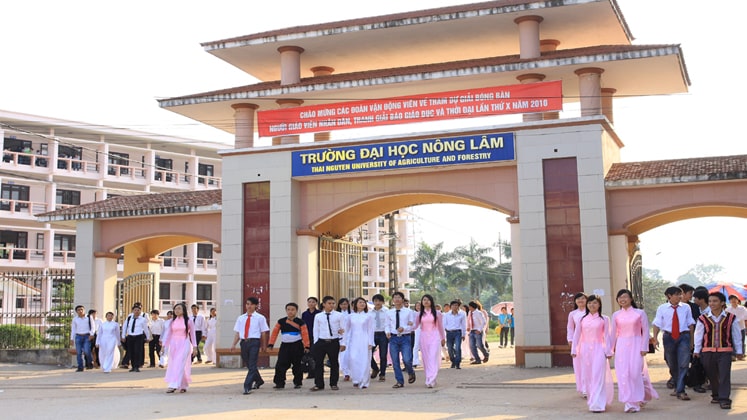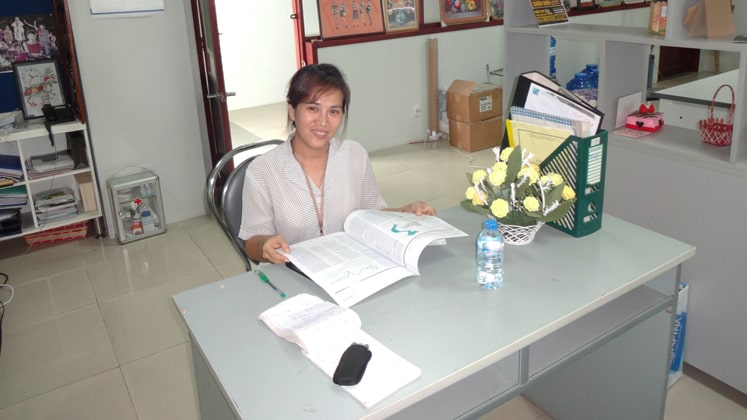
Despite our affinity for local language, the truth of the matter is that English is today a critical asset in any international business. Communication in English means easy access to international customers, global market trends and also the latest technology pertaining to industry.
Vietnam’s story of unparalleled growth in garment and textile industry is known worldwide, but one of its biggest handicaps has been its unfamiliarity with the English language, particularly the local companies. When Team Apparel Resources visited garment factories in Vietnam, even the senior management in some of these factories struggled to communicate in English. Knowing English, at a senior level, helps in travelling and meeting business officials across the world so as to get a good understanding of markets and business.
Initiatives from the top management
A lot of garment companies feel that the efforts to promote English language need to be initiated by the higher management. Nhabe Corporation is one such company which has got backing from its management and leadership. “When I came here, one of the agreements I had with the Chairman was that I wanted to run this like a western company and not like a state-owned company. All the people who work for us speak English. If we can communicate with our customers easily, they can communicate with us with same ease, and at Nhabe over 85 per cent speak English very well,” stated Michael Laskau, Managing Director, FOB Division, Nhabe Corporation (NBC). It is the effort of the senior management that has made things work for Nhabe today.
At Thai Son, the broadminded approach of its owner in understanding the needs and thoughts of the customers has taken the company to good heights. “Not only is our owner good at communicating in English, but she also encourages her merchandising staff to learn English. So, it starts from top management here,” said Chris Walker, Apparel Production Advisor and Marketing Manager, Thai Son SP Sewing Factory, Vietnam.
Most of the local Vietnam companies have limited human resources, and who can speak English well. The owners of many companies, however, have been initiating to send their people for English classes. “Only the merchandisers have good English knowledge and because of which the apparel and textile sector, especially with regard to new technology, is impacted,” said Long Vu, Material Sales Manager, Youngone Corporation.
A lot of companies, like Evolution3, have been investing in developing and promoting educational programmes with focus on English. The management has undertaken this programme for all its employees. There are people (though in smaller proportion) who have the required basic English knowledge, but due to their accent, they are never confident of speaking the language. They need to be encouraged to speak the language and this is where the efforts taken by companies like Evolution3 need to be commended.
English language centres and institutes
Increase in the number of institutes and English learning centres in Vietnam is also a validation to the growing drive among Vietnamese youth to embrace the language. The Government in 2016 directed public universities to introduce English as a second language of instruction.
The University of Technical Education, Ho Chi Minh City, which specialises in garment technology and fashion, teaches English too. “From terms 1 to 3, we have English classes whereas in term 4, the students learn vocabulary related to their field. Besides, if the students win first prize in a competition, they get to study English from a reputed institute,” averred Khanh Thi Thuc Ho, Head, Fashion Design Section, University of Technical Education, Ho Chi Minh City.

Fast fashion brands have also been now taking initiatives in this regard. Khanh says that the English classes conducted by Adidas help the students communicate much better unlike the ones taught in her university, which focuses more on basic English.
The 2008-2020 national project: ‘Teaching and Learning Foreign Languages in the National Education System’ expects the university graduates, who have not majored in languages, to reach B1 English, which is the third of the six levels under the Common European Framework of Reference for Languages (while A1 is for beginners, A2 is elementary, B1, B2 are intermediate and C1, C2 are advanced). However, only 5 students have been able to attain that level in 2015. “The institutes now will have to bring down the requirements to A2 level,” substantiated Đặng Văn Minh, Deputy Director, Thai Nguyen University.
There are issues which require attention and need to be worked upon. The struggle to attain the targets seems to be stemming from various factors that include poor English knowledge of the teachers, outdated teaching styles and also lack of human and other resources.
The Government has revisited the plan and is striving to further move its language learning plan to 2025. There is also awareness among the youth in Vietnam to learn the language digitally, thanks to the Internet penetration rate of 50 per cent in Vietnam. Today, there are more opportunities for Vietnamese students to learn English and foreign languages online.
Awareness to learn English is now soaring…
Majority of the senior- and middle-management have started speaking English and there is definitely some improvement from what it was some years back. Validating on this further, Simon Reed, Apparel Consultant in Vietnam commented, “In the last 3 weeks, I visited and met people from differing levels of the factory and they have all had support from merchandisers whenever the owners or the senior management struggled to communicate in English. In general, however, most of the upper- and middle-management speak decent English.”
Dhananjay, Senior Merchandising Manager, Saitex International (VN) Ltd., while endorsing the thoughts of Simon said, “Now English is not an issue for people in Vietnam. People speak decent English.”
A lot also depends on the exposure cities get. Ho Chi Minh City is more exposed to different world cultures compared to other cities in Vietnam. Substantiating further, Makysm Sukhanov, General Director, Maximum Sourcing Co. Ltd. added, “It is still somewhat a barrier in the North Vietnam, where the culture is more of ‘Chinese’, but it definitely is not in the South. Historically, South Vietnam has always been open for other cultures and is more cosmopolitan.”
Some say there is a language barrier with the older generation; otherwise one can see considerable improvement among the younger generation. A lot of young professionals are now very fluent in English, and as they take over management positions in companies, the barrier is expected to become less.
It is good to see Vietnam today embracing the need to educate its management as well as its workers about English language and its relevance. However, the pace is still far from being satisfactory, which is holding back lot of companies. What Vietnam needs is just that extra impetus to make English an integral part of business.






